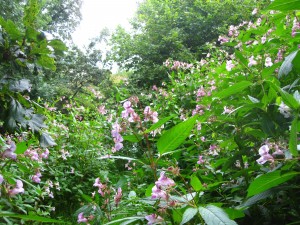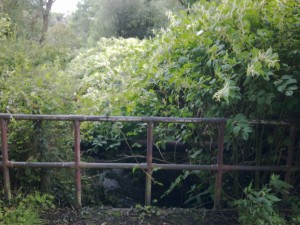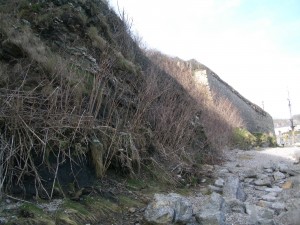It’s the start of Invasive Species Week. Think the signal crayfish annihilating its native counterpart, the white clawed crayfish, or Himalayan Balsam rapidly spreading across our river banks, suffocating other plants. The question is would you be able to tell the difference between a native or non-native species?

Tackling over 30 invasive species
I’m not sure I would! However, tough new European legislation came into force earlier in the year to try and tackle the spread of over 30 invasive species in the UK. But if we really are going to put a stop to them, it’s going to need the likes of you and me to get involved.
So, this week, we’re being asked to learn a little more about invasive species, why they’re a problem and what we can do about it. I’m no expert myself – I felt proud last week when I pointed out some snowdrops to a friend on a walk! But, invasive species pose significant environmental and economic threats. A few killer stats for you…
- Invasive, non-native species (INNS) cost the UK more than £1.7 billion a year to control.
- Out of 2000 non-native species currently in the country, 300 are invasive, with one or two new INNS arriving each year.
- INNS have been the most important drivers of bird extinctions over recent centuries, responsible for around half of global bird extinctions since 1500.
The south-west experience
WaterLIFE is working in the south-west to try and improve the water environment. Westcountry Rivers Trust, one of the project’s lead organisations, recognises the threat to the environment and habitat invasive species pose, and has been working for over a decade to tackle the issue.

If you were strolling along the River Tamar or Camel, you will most likely see the pink flowers of Himalayan balsam in summer and occasional dense patches of Japanese knotweed, or be impressed by the colossal height of Giant hogweed. These seemingly attractive, harmless plants are responsible for serious damage though. They’ve managed to totally monopolise some areas, suppressing natural species which can also lead to eroded riverbank, leaving parts bare and exposed which increases the risk of soil erosion as well as sediment and other materials being carried downstream, potentially increasing the risk of flooding. Himalayan balsam and Giant hogweed produce hundreds of seeds so it only takes a few plants to create fresh problems.
In 2004, Westcountry Rivers Trust (WRT) began working with the Waterwaysnet project to survey and map all INNS on the River Camel. The data collected meant they were able to identify the scale and extent of the problem for future work, plus select a few small demonstration sites with a view to trialling different techniques to clear the balsam and knotweed, and contain the spread of it. This led to a series of later projects, within the river corridor using different approaches. Later work with the Newquay Students Invasive Non-Native Group aimed to raise awareness about the problem, recruit more volunteers to help clear the plants and educate communities to ‘spot a sighting’. More recently, WRT is exploring biocontrol with the Centre for Agriculture and Biosciences International. There have been some real successes. On the River Camel, for example, balsam has declined between 50-80% where the groups have been able to work to clear it over a number of consecutive years.
The key seems to be partnership working, as is often the case. WRT has worked with many groups, landowners and communities over the years, but consistency of control measures and remaining vigilant are two crucial factors. The ambition to stop the spread of 37 invasive species cannot be achieved by one organisation alone – it will take a combined effort with the necessary resources and funding.

What can you do?
Invasive week starts today, 29th February and runs until 4th March. It’s all about raising awareness and knowing what to do if you spot an invasive species:
- There are hundreds of events happening across the country.
- Find out more about the ‘Check, Clean, Dry’ and ‘Be Plantwise‘ campaigns to make sure you’re doing everything you can to prevent the spread of invasive species.
- Get social – #InvasivesWeek
- Download our Citizen Science toolkit for ideas about how to get more involved with your local river
- Find your local catchment partnership
For more information on invasives week and the events taking places visit the non-native species website.
Hannah Blackburn, Communications Officer, WWF-UK
